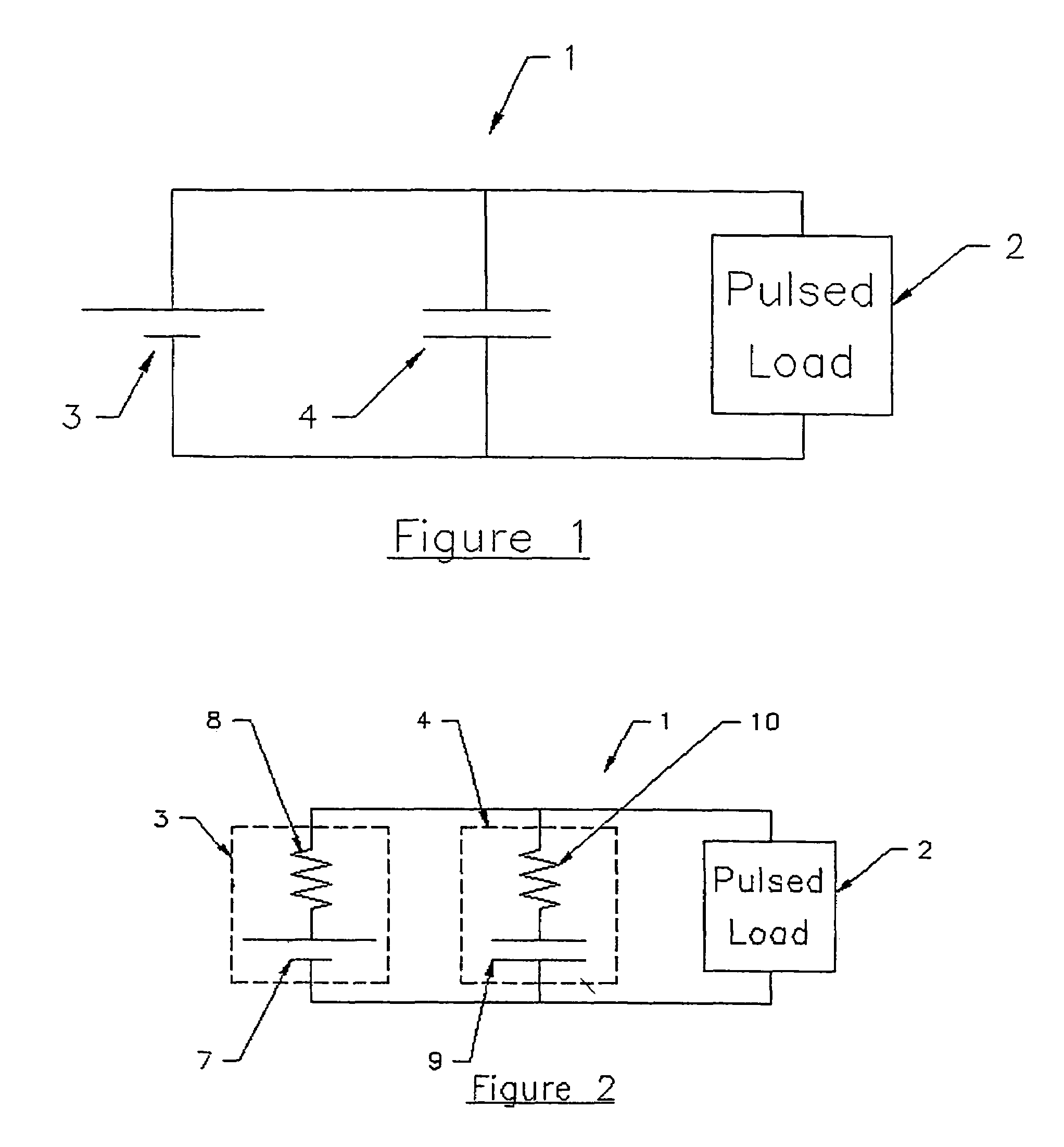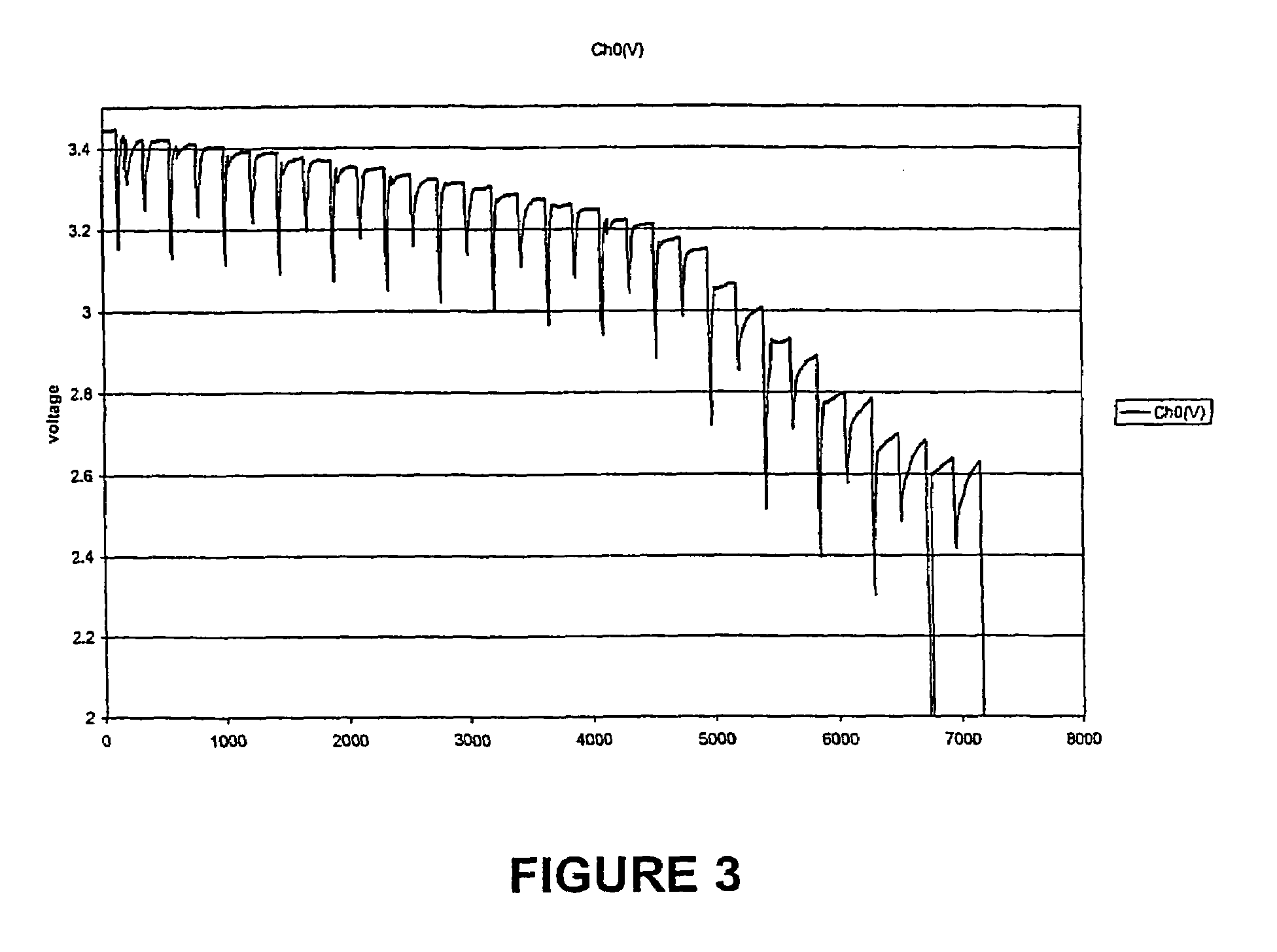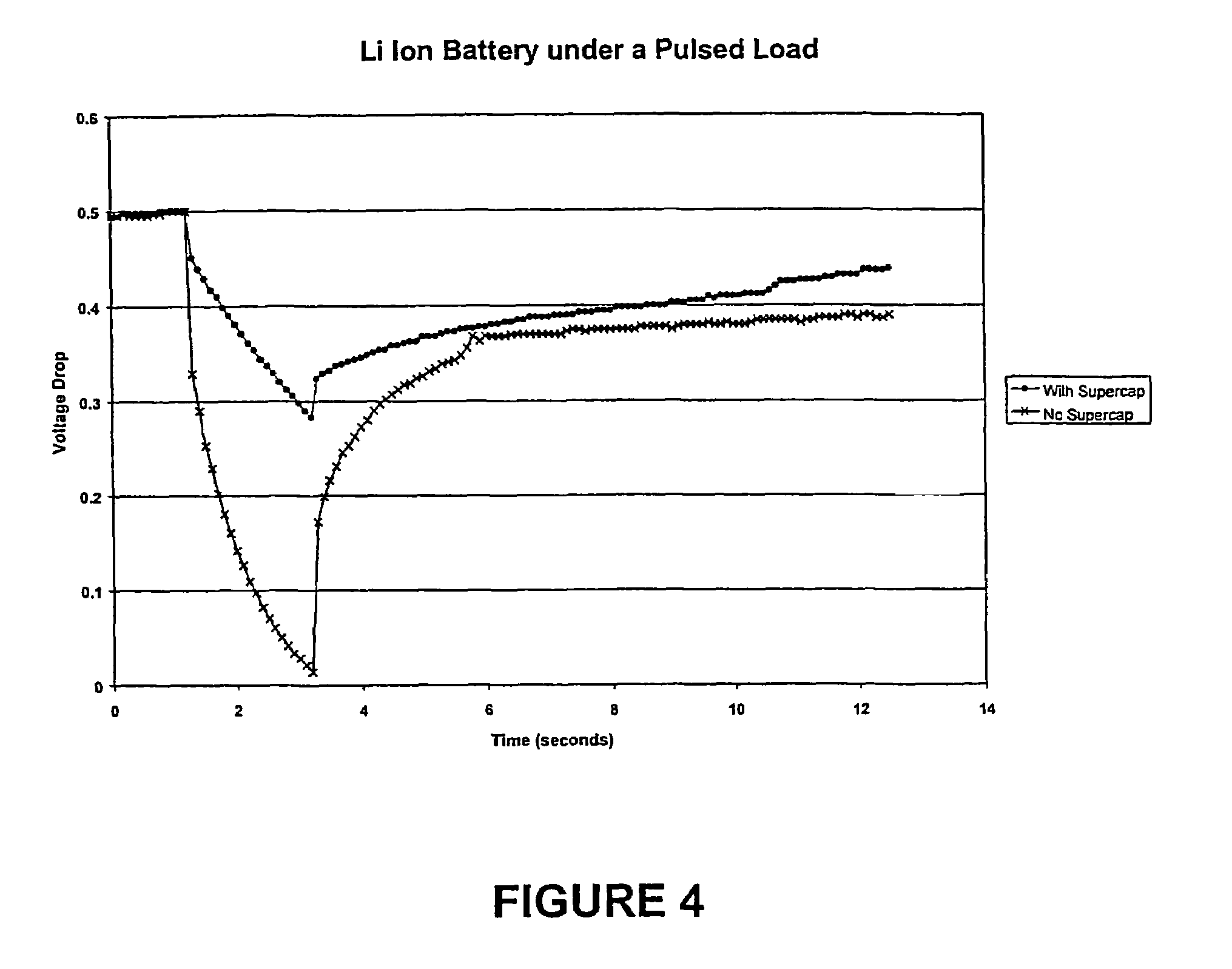Power supply for a pulsed load
a pulsed load and power supply technology, applied in the field of power supply, can solve the problems of large voltage drop, less able to supply peak current demand without the device cutting, and detrimental to the battery
- Summary
- Abstract
- Description
- Claims
- Application Information
AI Technical Summary
Benefits of technology
Problems solved by technology
Method used
Image
Examples
Embodiment Construction
[0057]The following terms are used in the specification in the following manner:[0058]1. “laptop computer” and “notebook computer” are used interchangeably and are intended to include portable computing devices, particularly those having on board rechargeable energy storage devices;
[0059]an ideal battery 7 in series with an internal resistance 8; and
[0060]an ideal capacitor 9 in series with an equivalent series resistance (ESR) 10.
[0061]Through use of a supercapacitor 4 having a low ESR with respect to the resistance 8, the power supply 1 facilitates continuity of supply to load 2. That is, during peak demand more of the load current will be supplied by supercapacitor 4 due to the lower ESR. Moreover, during times of lower load current demands the battery recharges the supercapacitor. This reduces the peak current needed to be provided by the battery and thereby improves battery longevity.
[0062]That is, this parallel hybrid combination of a supercapacitor and a battery allows a redu...
PUM
| Property | Measurement | Unit |
|---|---|---|
| internal resistance | aaaaa | aaaaa |
| capacitance | aaaaa | aaaaa |
| temperatures | aaaaa | aaaaa |
Abstract
Description
Claims
Application Information
 Login to View More
Login to View More - R&D
- Intellectual Property
- Life Sciences
- Materials
- Tech Scout
- Unparalleled Data Quality
- Higher Quality Content
- 60% Fewer Hallucinations
Browse by: Latest US Patents, China's latest patents, Technical Efficacy Thesaurus, Application Domain, Technology Topic, Popular Technical Reports.
© 2025 PatSnap. All rights reserved.Legal|Privacy policy|Modern Slavery Act Transparency Statement|Sitemap|About US| Contact US: help@patsnap.com



